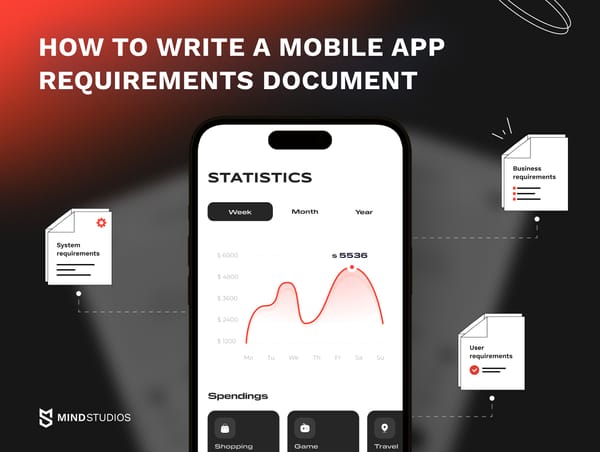In this article, we compare the dedicated team, fixed price, and time and materials outsourcing models, analyze each in detail, and provide tips on how to choose the appropriate model for your startup project. In addition, we describe the advantages and disadvantages of outsourcing and common problems that companies face when outsourcing. The term outsourcing refers to any situation in which a person or company provides services (performs tasks), or produces products for another company. Outsourcing is a choice that companies make in order to save money. But outsourcing also helps companies access external expertise and speed up time to market.
Contents:
- Types of IT outsourcing services and statistics
- Advantages and disadvantages of outsourcing
- What are the challenges of outsourcing?
- Three types of outsourcing models
- Dedicated team
- Time and materials
- Fixed price
- Comparison of software outsourcing models
- Dedicated team vs time and materials vs fixed price
- How to choose a suitable outsourcing model
Types of IT outsourcing services and statistics
In the field of information technology, outsourcing is common. The main types of IT outsourcing include:
-
Moving operations overseas to lower costs and create a more favorable economic climate
-
Nearshoring, or transferring operations to a neighboring country
-
Homeshoring/onshoring, or enabling employees to work at home rather than at the office
Companies that provide IT outsourcing services often take over certain responsibilities from their clients, including application and program development, application support and management, web development and hosting, technical support, database administration, and telecommunications. Outsourcing companies also offer planning related to business analysis and business infrastructure.
Read more about Writing Business Plan for Mobile App Idea.
Forrester Research estimates that the global costs to businesses and governments for IT outsourcing and equipment maintenance (including support services for computer equipment, networks, infrastructure outsourcing, hosting, application outsourcing, and application management) amount to about $500 billion in 2017.
According to Statista, over the next few years we’ll see a downward trend in the size of the outsourcing market, but certain segments, such as cloud computing and IT outsourcing, will continue to grow. It’s assumed by Statista that revenue of the global cloud infrastructure as a service market (IaaS) will grow from $717 million in 2010 to $26 billion by 2020.
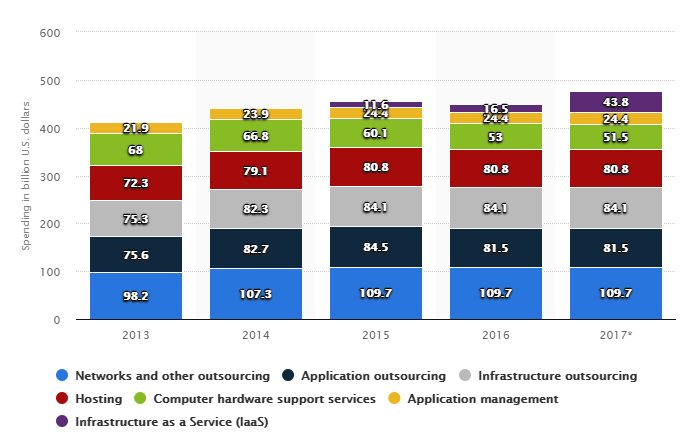
Forecasted business and government spending on IT outsourcing and hardware maintenance from 2013 to 2017, by segment (in billion US dollars). Source: Statista
Advantages and disadvantages of outsourcing
In addition to reasons why companies choose to outsource parts of their business, we can briefly discuss the pros and cons of outsourcing.
Advantages of outsourcing
Companies choose outsourcing to:
- Reduce costs
- Be attractive to investors
- Gain team flexibility
- Increase efficiency
- Reduce risk
- Get a competitive advantage
- Access expertise and technology
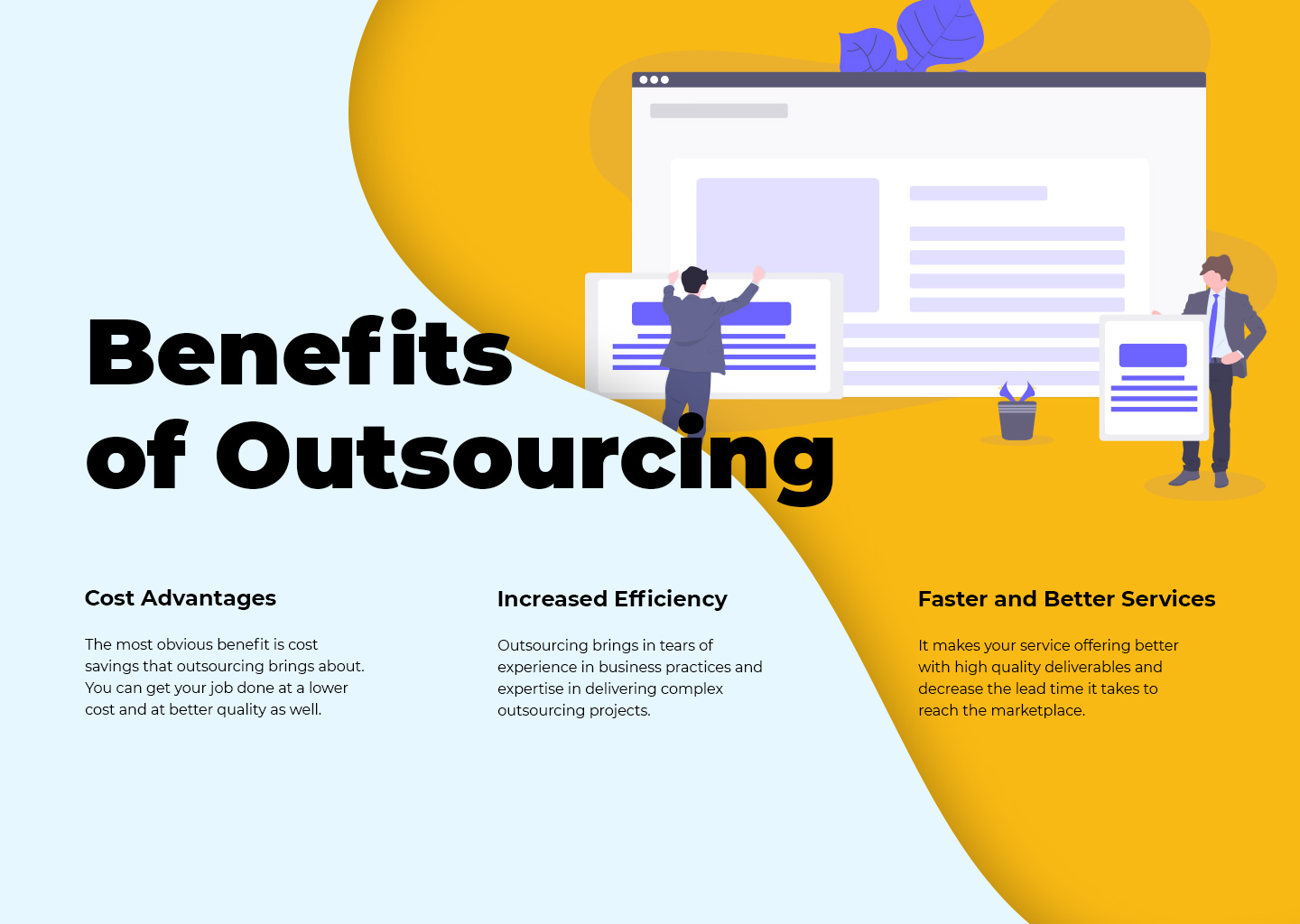
Disadvantages of outsourcing
The disadvantages of outsourcing include:
- Lack of control
- Hidden costs (unexpected costs in contracts)
- Cultural and language barriers
- Possible quality problems
- Time zone differences
- Slow turnaround times and increase in implementation time due to language barriers and time differences
- Instability in case the outsourcing company goes out of business
These shortcomings varied or leveled depending on a company’s processes and approach, experience, and other factors. We’ll look at potential challenges of IT outsourcing in more detail.
Read also: How to make a fitness mobile app
What are the challenges of outsourcing?
We’ll discuss common mistakes that occur during outsourcing and how to avoid them with good planning. Consider these common problems in IT outsourcing.
Unforeseen expenses
When you use IT outsourcing in your business, you have to take into account unforeseen expenses, for example costs of consulting an IT contract specialist, unplanned trips, unplanned services and functionality, and extended project lead times.
Time
The time is one of the barriers to solving certain situations (to wait for a specialist connect to solve your problem) as well as to communication (to spend time to bringing new people up to speed) if it’s necessary to connect with an IT outsourcing firm.
Distance
In addition to time, the ease of coordinating work is influenced by the distance between you and your outsourcing company. Distance isn’t a problem for outsourcing work when both sides are informed on the status of the process in writing and all project participants clearly know what results are expected.
Human factor
Interactions between employees should be effective even when adding new specialists in the framework of IT outsourcing. Although everyone has different methods of work, building relationships with external experts should improve teamwork. You should strive to create a healthy and trusting atmosphere.
Language barrier
Don’t forget about the language barrier if consultants from the outsourcing company aren’t native speakers of your native language.
Security
When outsourcing processes that involve personal data and when transferring this data to other people, the confidentiality of others and the security of your business may be compromised.
Management control
When outsourcing an important part of a company’s established system it’s difficult to keep control over the day-to-day functioning, management, and development strategy of the company.
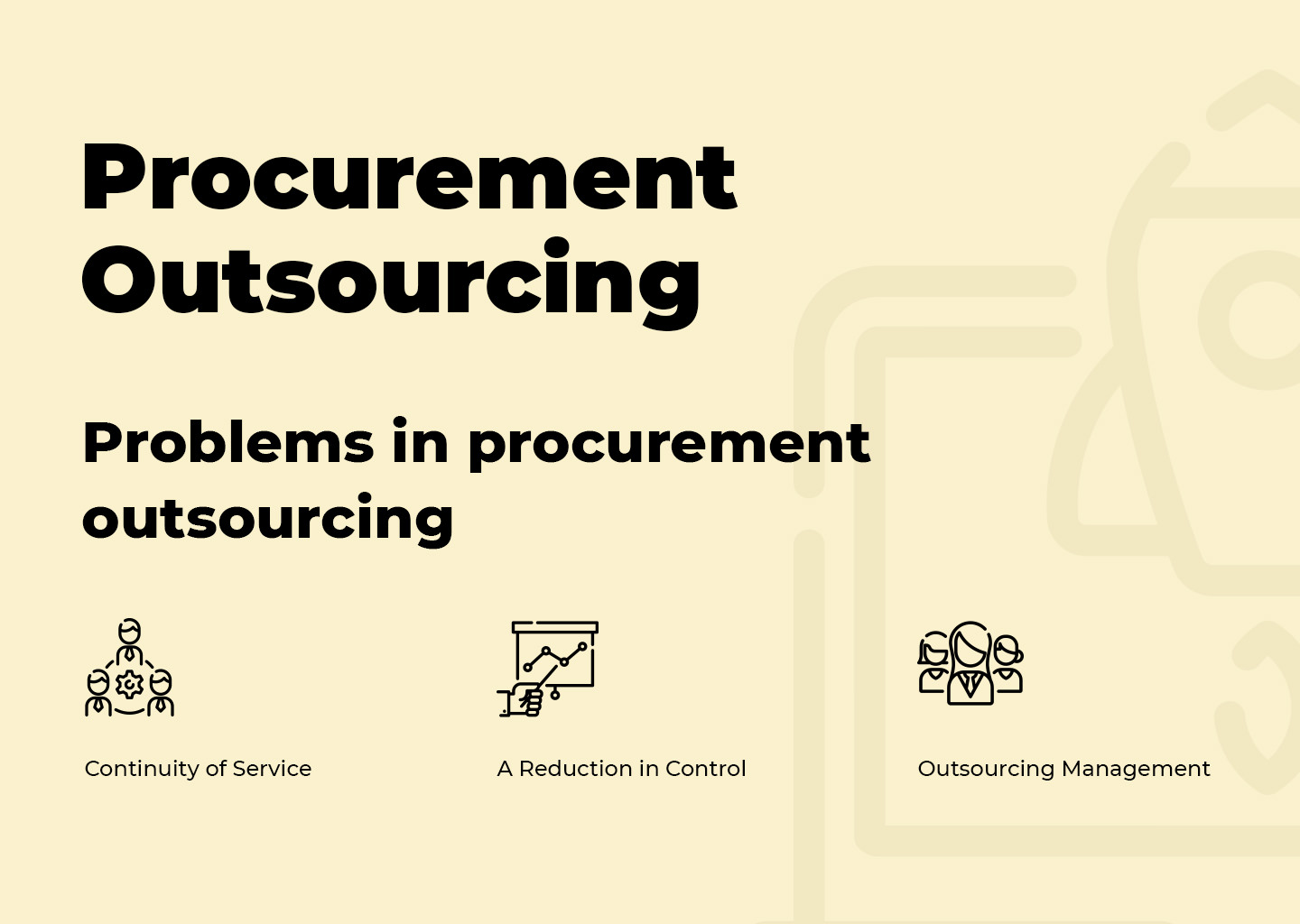
To achieve success in outsourcing, you must structure your outsourcing partnership well and carefully develop it. You need to choose the right outsourcing partner to ensure that you meet your goals in terms of the product’s cost, quality, and roadmap. You should be in close contact with your outsourcing partners from formulating the initial characteristics of the product to signing the contract. In addition, it’s necessary to take into account potential hidden costs. All requirements must be clearly documented in the contract.
Three types of outsourcing models for implementing your project
We already have an idea about the advantages and disadvantages of IT outsourcing. Now we’ll consider three business models of outsourcing, namely the dedicated team model, fixed capacity pricing model, and time and materials model. Your choice of model should depend on the nature and needs of your project.
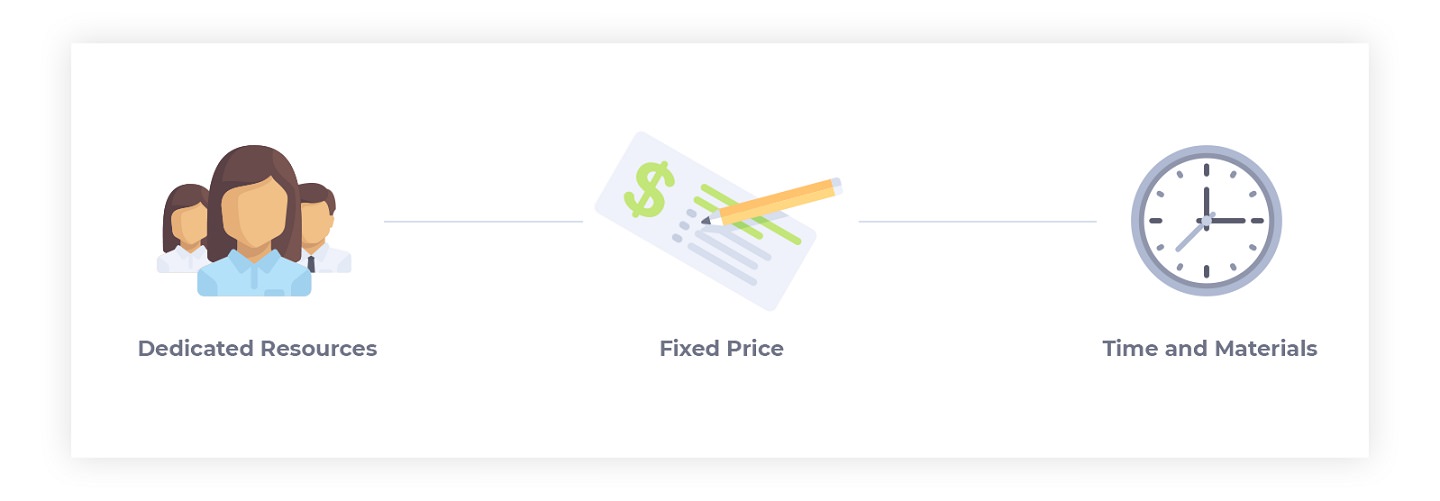
Dedicated team
The dedicated team model is used for long-term projects where requirements are unclear and vary with changes in the scope. It’s also used when the customer’s own team doesn’t have skills or expertise in certain areas. A dedicated outsourcing team can be connected to a client’s team to perform high-quality, unique, and specific projects without expanding the client’s core team.
The pricing model for dedicated teams is monthly payments based on team size that include fixed service costs.
What is role of the client when working with a dedicated team? As a client, you can interact with your dedicated team and control the progress of the project. This allows you to keep a balance between your in-house team and your dedicated outsourcing team and adapt to the circumstances.
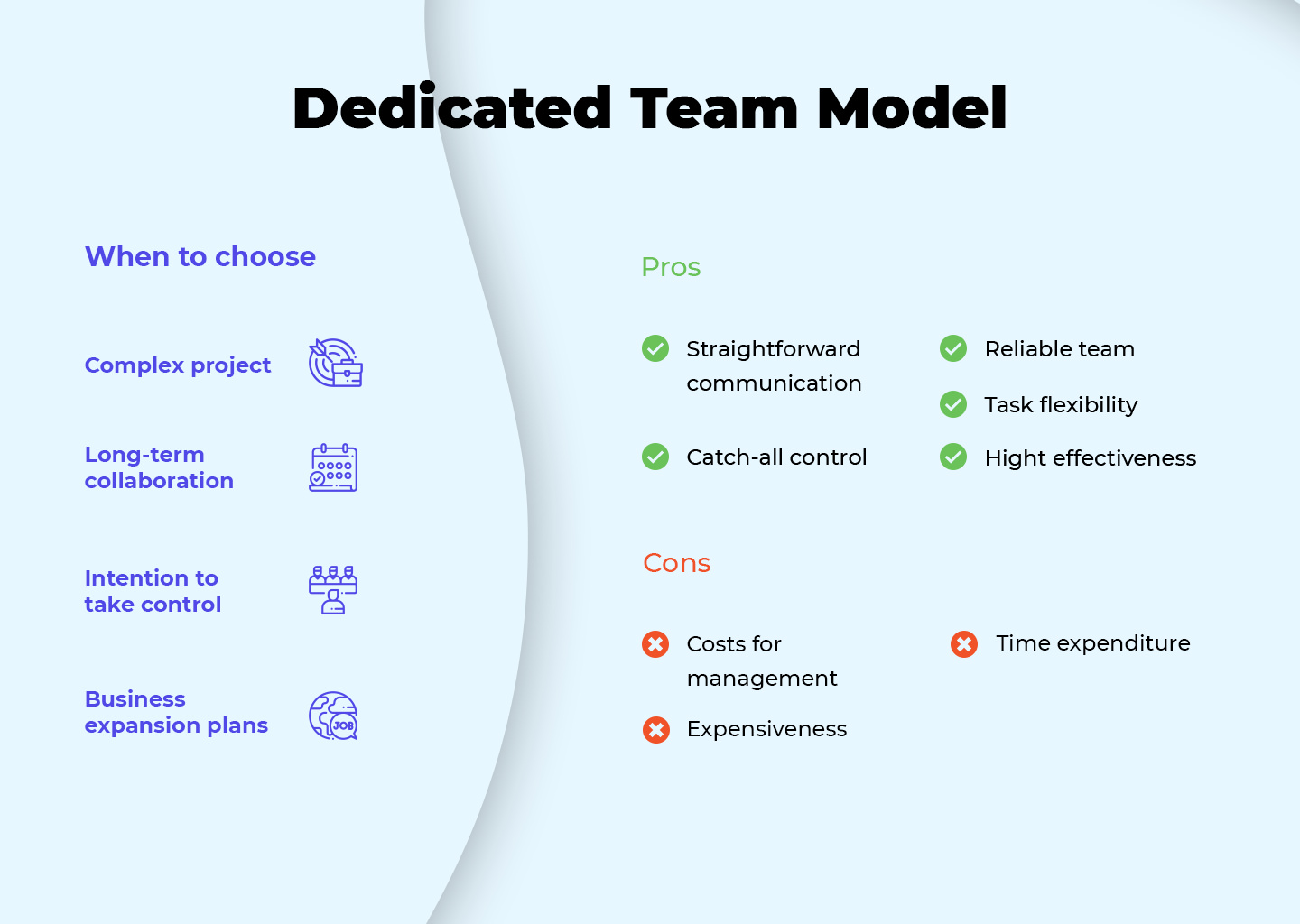
Features of the dedicated team model:
- The customer together with the outsourcing company determines the number of employees necessary for the project and outline what skills they should have.
- The customer manages and controls the project/product and the team.
- In some cases, the management process is defined so that the outsourcing provider controls the software product.
- The outsourcing provider is expected to find a dedicated team that meets the project’s stated requirements. The provider must develop the work processes for this team.
- The requirements for the workload and the entire project (for a certain period of time) are coordinated between the team and the client.
- Experts who meet all the criteria gather in one team and begin work.
- Team leaders control the implementation of the planned work schedule.
- Team leaders manage requirements, monitor the status of the project, report on the status to the client, and make proposals for project management.
Advantages of the dedicated team model:
- Economic efficiency: Hiring a dedicated team is more economical than assembling a team independently, which is laborious and time-consuming. It’s one of the main advantages of dedicated project team.
- A focused approach allows you to concentrate and immerse yourself fully in the project. When a team is focused on one project, it ensures the best results. In turn, this model gives flexibility to reconfigure the team at each stage depending on requirements.
- Cooperation between the client and the team allows for effective planning and evaluating the strengths and weaknesses of the work process. Close cooperation using tools like Skype, Discord, Basecamp, and Zoom gives the control over the project.
- Continuous development allows you to improve existing functionality and add new functionality.
- A faster workflow in comparison with the time and materials pricing model, where the workflow is strictly planned.
- The ability to optimize the product is important for product growth.
Disadvantages of the dedicated team model:
- Inefficient for short-term projects. This model is effective only for long-term projects.
- Selecting a tea that can achieve the project’s goals can be a long process, and the client has to be involved in hiring team members.
After evaluating all the basic requirements of your software project, you’ll be able to understand whether the dedicated team model will fit your needs.
Time and materials
The time and materials model involves payment for the time and effort spent on development — that is, for the actual time spent implementing planned project functionality. This type of contract is one of the most common in outsourcing. It’s considered convenient, relatively flexible,and capable of adapting to any changes. As for the budget, the actual cost may differ from the estimated cost. Payment is made monthly on the basis of actual work performed.
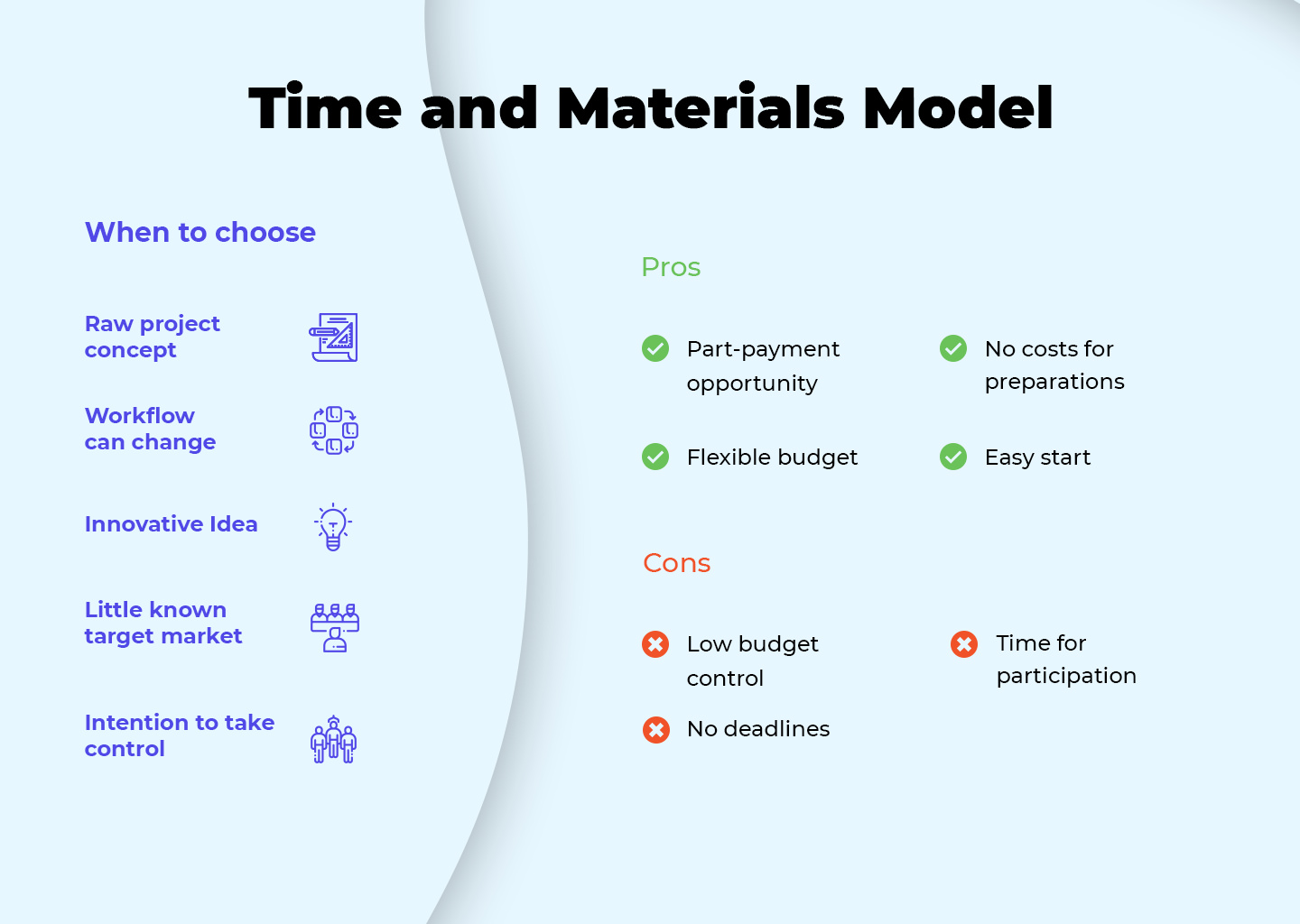
Who is this model suitable for?
The nearshore time and materials model is ideally suited for long-term projects with changing requirements. This model works for projects in which requirements change according to the needs of the business, projects that depend on the market situation, projects for which detailed specification is not yet defined, and so on. This model is characterized by some flexibility in comparison with the fixed price model.
Advantages of the time and materials model:
- A flexible approach to development (this model differs from other models in its approach to defining and managing the scope of work)
- Scalability and rapid adaptation to needs/market requirements gives flexibility to make changes to the project
- The possibility to clearly define project priorities is suitable for small companies and startups
- Time management (tight scheduling allows you to concentrate on important elements of the project)
- Cost control and budget flexibility
- Practical involvement of the client in the development process in order to monitor the performance of a certain work schedule in accordance with the expected results.
Disadvantages of the time and materials model:
- In spite of budget flexibility, at a startup it’s quite logical that you may not have complete information to assess the project budget, so it’s difficult to accurately estimate the amount of required investment.
- To achieve a high-quality product, continuous communication with the outsourcing provider is necessary.
- The time frames for development of the final product are rather blurry due to the uncertain scope of the project.
The time and materials software outsourcing model involves continual billing for both the time and resources that are needed to implement the project until you decide that you’re satisfied with the results. This model has no strict time limits, and constant cooperation and communication between the client and the outsourcing company reduces risks.
Fixed price model
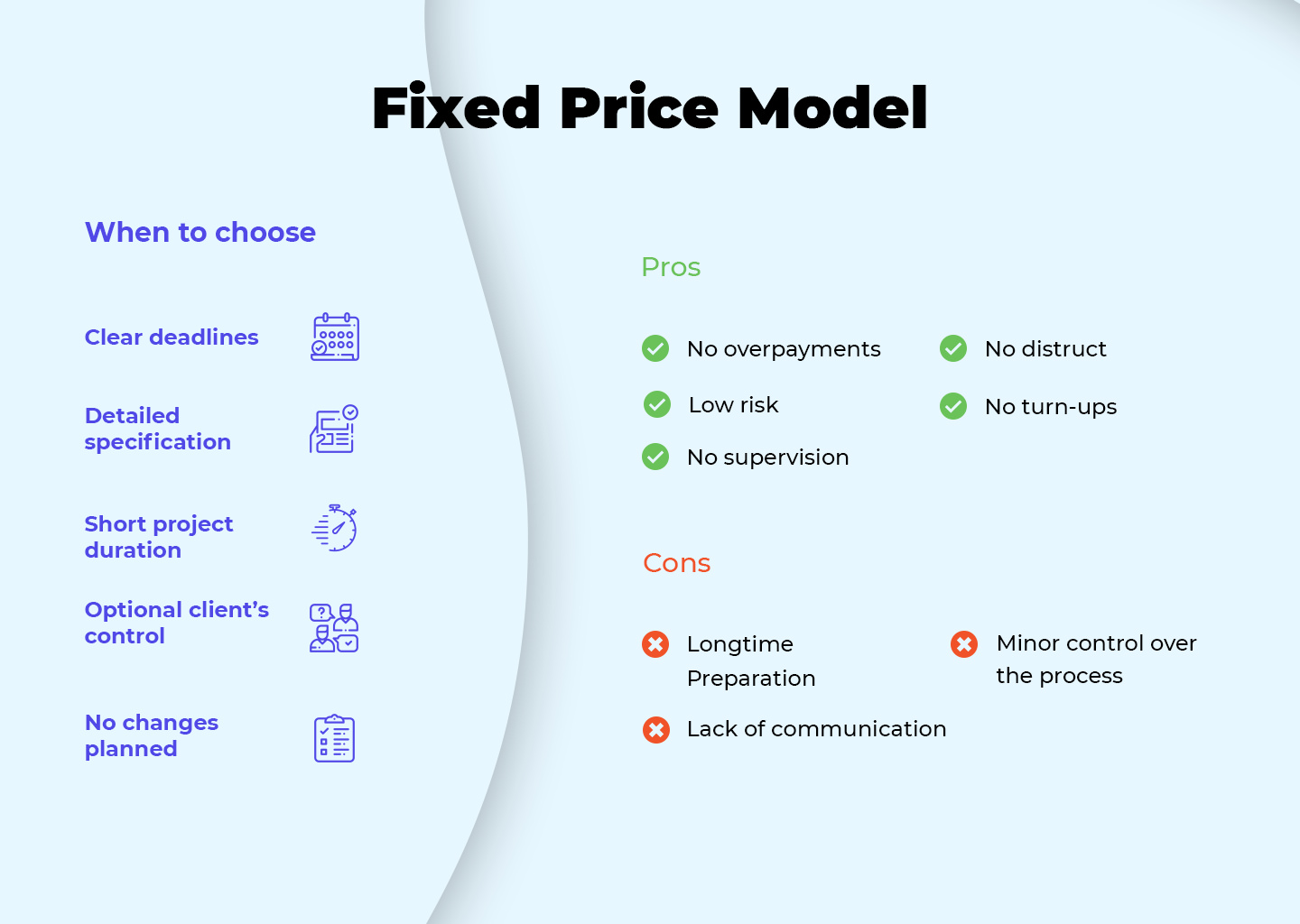
The fixed price model (or fixed budget model or fixed-capacity model) is considered riskier for developers since all risks are on them. The fixed bid model is most favorable for the client, who has the opportunity to defer payment.
When to use the fixed price interaction model:
- For short-term small or medium-sized projects that are developed in several iterations with a fixed price
- For small projects with a limited scope
- When you have a limited/fixed budget
- When developing an MVP
- When you have clear project requirements and deadlines
Advantages of the fixed price model:
- The cost of work is agreed before signing the software development contract.
- The terms of work are clear; stages and terms of development are approved by the client and developers, so the project is likely to be ready and delivered on time.
- The development process is coordinated by a project manager, so the client's participation isn’t necessary.
- There’s a low risk of losing funds.
Disadvantages of the fixed price model:
- Risk management is complex as there’s little control over the development process; checking the implementation of project stages and compliance with expected results is difficult.
- Lack of communication is a concern as this model doesn’t provide for frequent client communication with the outsourcing team.
- A long preparation period is needed as all requirements for implementation and deadlines must be documented.
For a well-functioning project according to the fixed price model, the following measures should be taken:
- The scope of work, time, resources, and project costs should be fixed in the contract.
- All details should be spelled out and agreed in advance.
Criteria for performance should be described in detail and deadlines should be set for acceptance and performance of work. - Terms of issue resolution should be addressed in the contract.
- To ensure full payment for work, all work should be broken down into small stages with a schedule of acceptance of work and payment for each stage. Leaving no more than 10% (as an upper limit) of the value of the contract for the last stage protects a development company against losses.
What conclusions can be drawn regarding this model of cooperation?
The fixed price model is reliable for the client, since all costs that go beyond those previously discussed in the budget are passed on to the development company. The possible risks that may arise for service providers generally make this business model a little more expensive than the other business models, however.
When is the fixed price model what you need? If you’re fully aware of what’s happening in your market, are aware of the preferences of potential users, know your exact budget, and are ready to invest your funds and time, then you can choose this cooperation model.
Comparison of software outsourcing models
Fixed price vs dedicated team
What should I choose? This is one of the first questions you ask yourself in choosing the behavior of the business model in outsourcing software development. Obviously, these models take different approaches and the implementation of all three software development pricing models will be different. As we said earlier, if your project is short-term, then it’s best to use the fixed price development model. The fixed price model requires well-designed project characteristics and requirements. Additionally, requirements must be formulated before the project is launched. If your project requires searching for specialized developers, it’s much easier to choose the dedicated team model so that developers are hired specifically for your project.
Time and materials vs fixed price
Unlike the fixed price model, the time and materials model has great flexibility in terms of budget requirements and the project as a whole. This model works well for both large and medium-sized projects while providing full control over the development process and budget. While the product is under development, the total cost o and scope are estimated only approximately. Predefined requirements will determine changes in the project. Important factors in this process are the time and effort required to implement the project.
Read How to estimate mobile app development
In addition, the time and materials model is much less stressful and risky for project than the fixed price model. The fixed price model has become more difficult to implement, however, as the market is constantly changing thanks to rapidly developing technology. Outsourcing with a fixed price requires a lot of time for detailed project preparation. For long-term and complex projects the best choice is the dedicated team model.
When transferring the responsibility for implementation of certain parts of the software development process to your development provider, you’re also transferring risks of underestimation due to inaccurate requirements, and no company can take on these risks for free. Therefore, you must clearly define the requirements for your project and fix them at the beginning of the project.
Obviously, when transferring responsibility for a product to an outsourcing provider, this responsibility extends to the results of your project, in other words, the outsourcing provider is responsible for the final results of your project. When the dedicated team is increasing, you pay more for performing tasks in the same time frame (payments per month depend on the team size). If you use the time and materials model, then each engineer will receive a monthly rate and this rate will increase with the expansion of personnel through the target project team.
Dedicated team vs time and materials vs fixed price
In the comparison table below, we’ve collected all the main characteristics of the three models presented in this article to help you objectively evaluate them.
Comparison of outsourcing business models
| Dedicated team | Time and materials | Fixed price | |
|---|---|---|---|
| Size of project | Large | Medium and large | Small and medium |
| Project duration | Long | Average and long | Short and average |
| Client’s control over processes | High | Middle | Low |
| Final product | Unclear | Unclear | Clear |
| Requirements | Evolving | Evolving | Defined |
| Technology stack | Not fixed | Situational | Pre-planned |
| Flexibility | High | High | Low |
| Scope of work | Estimated | Not set | Predefined |
| Methodology | Agile | Agile | Waterfall |
| Pricing | Fixed price for each team member per month | Fixed price per hour | Fixed project price |
| Budget | Flexible | Flexible | Fixed |
| Time frames | Estimated | Incremental or intermittent | Predefined |
| Dedicated resources | Scalable | Not assigned | Assigned |
| Team scalability | Middle | High | Low |
How to choose a suitable outsourcing model
Outsourcing will allow operations that have seasonal or cyclical demands to bring in additional resources when you need them and release them when you are done. — James Bucki
How can you choose the business outsourcing model that best suits your project? Start from the first rule of outsourcing: understand what your actual needs are, then choose the right approach and implement it. Depending on the specifics of your project, you must decide what risks you’re willing to pay your outsourcing provider to take on and for which part of the project the supplier will be responsible.
In addition, a minimum viable product allows you to choose a vector for project development since an MVP lets you check how your product is accepted by the market and how you can improve it in accordance with market trends and customer preferences.
Each outsourcing model has its own benefits and risks. The choice between fixed price vs dedicated team or fixed price vs time and materials is a matter of your company’s needs. You should clearly understand which of the three strategies carries the least risk for your business.
If you still can’t choose, our experts at Mind Studios can help you find your bearings and make the right choice. Contact us today to learn more about outsourcing business processes. We help companies anticipate problems and achieve increased productivity and overall success. With our help, you can choose the application development outsourcing model that best suits your project needs so that your product is successful on the market.
Read also:





![How to Create an On-Demand Medicine Delivery App [Expert Guide]](https://themindstudios.com/blog/content/images/size/w600/2025/03/IMG-1-Cover-6.jpg)
